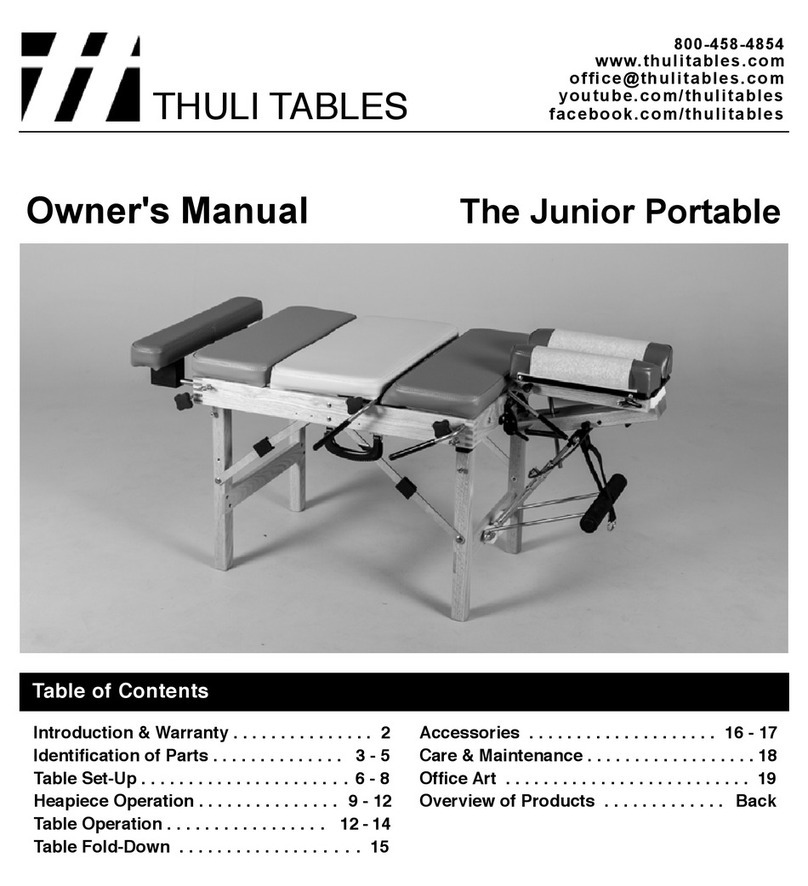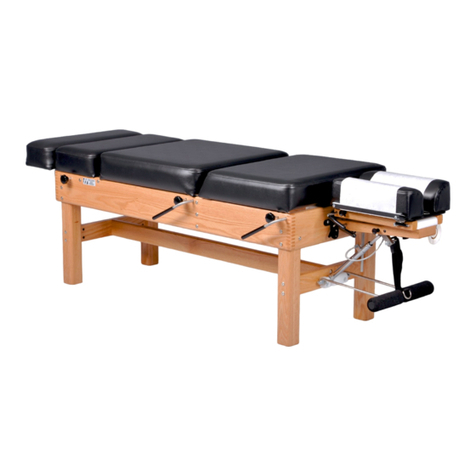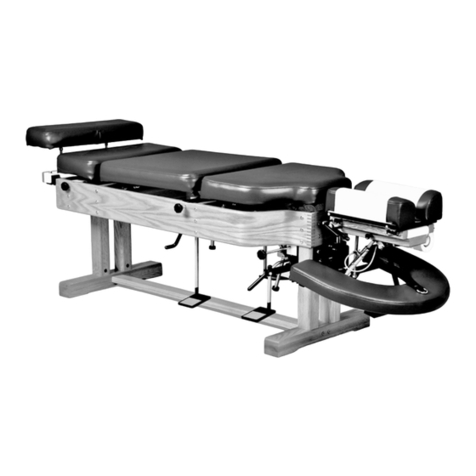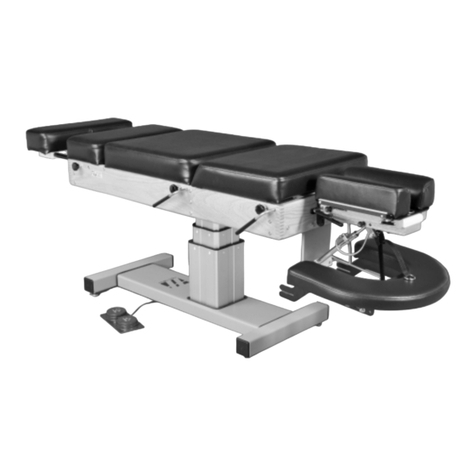
2
1. Open the table (pg 7)
2. Remove headpiece from storage, engage T-bar
and attach headpiece (pgs 7-8)
3. Erect front legs (pg 8)
4. Attach piston to headpiece (pg 8)
5. Release thoracic section (pg 9)
6. Erect middle legs & attach support braces (pg 9)
7. Erect back legs (pg 9)
SET-UP (pgs 7-9): Begin at the headpiece and progress toward the ankle rest.
Introduction 2
Table Set-Up & Fold-Down: Quick Reference
FOLD-DOWN (pgs 18-19): Reverse the set-up sequence above. Begin at the ankle rest and progress toward the headpiece.
Fold the front half of the table onto to the back half.
Rick Thuli, D.C.
President
Sincerely,
We are pleased to provide you with a chiropractic adjusting table that is elegant,
versatile and engineered with precision. It has been thoroughly inspected and
tested right down to the smallest detail before leaving our shop. We are
condent that it will provide you with many years of reliable service.
Please take the time to read this manual carefully. It will familiarize you with
the table and instruct you on its proper operation and maintenance.
If you have any questions or comments, please contact us.
Thank you for your purchase of a Tour portable table.



























